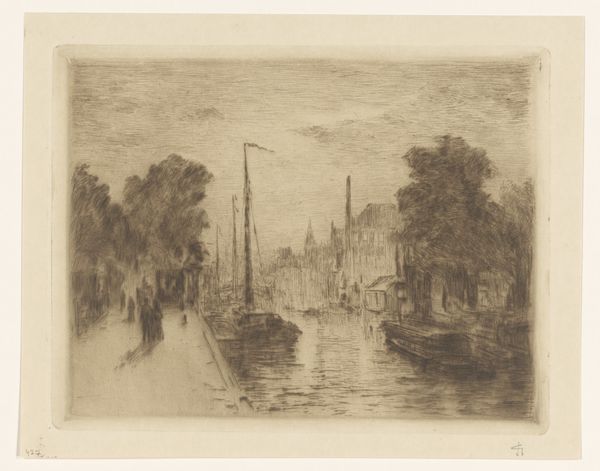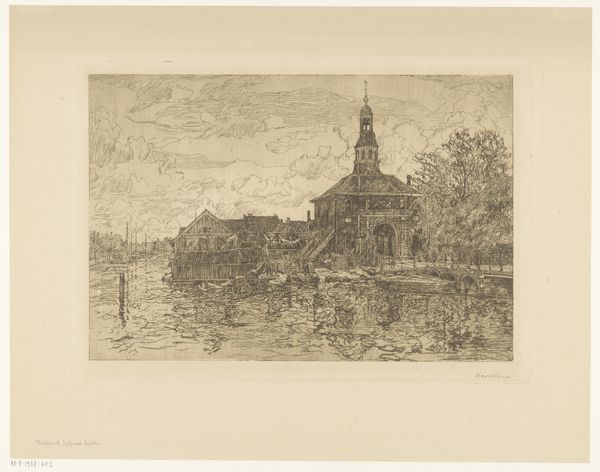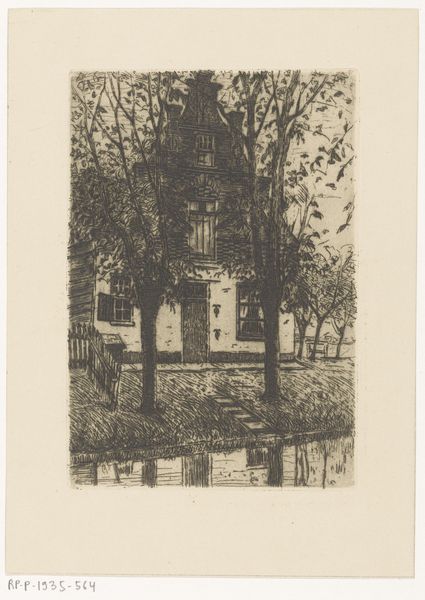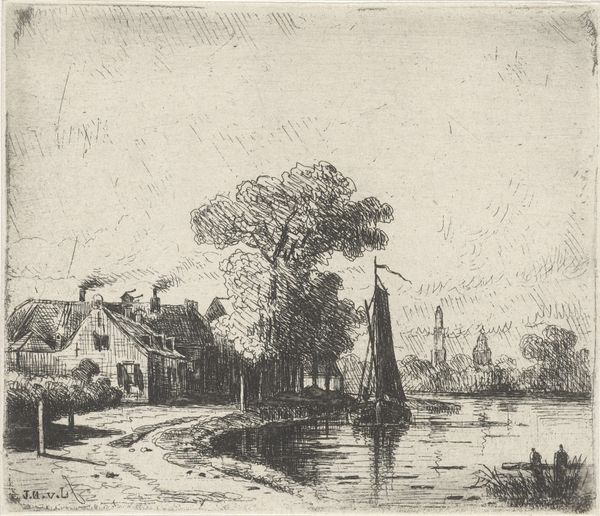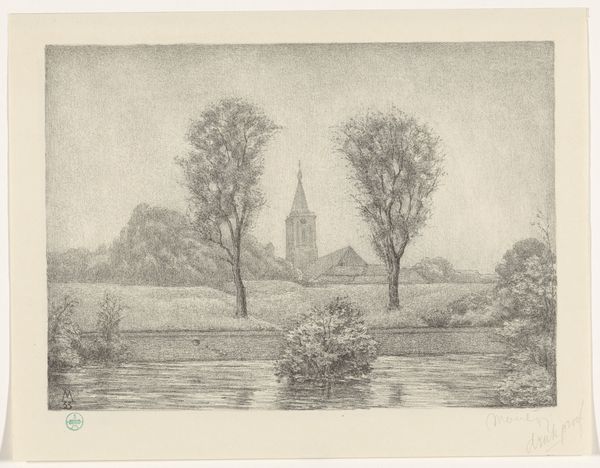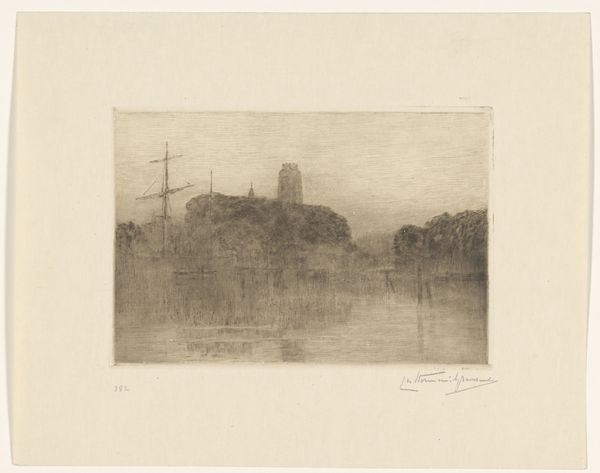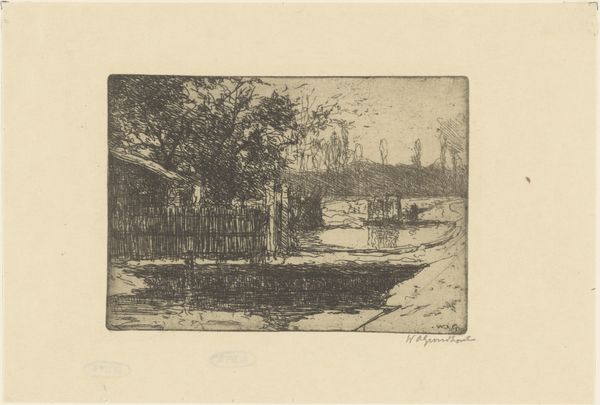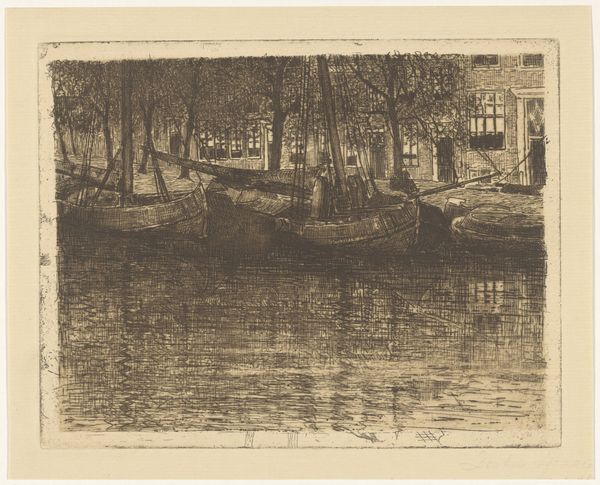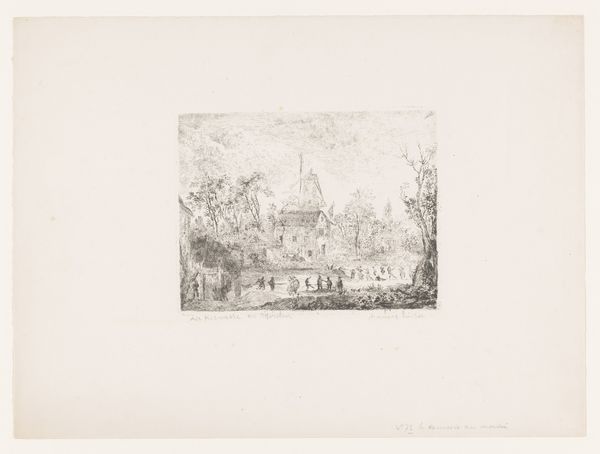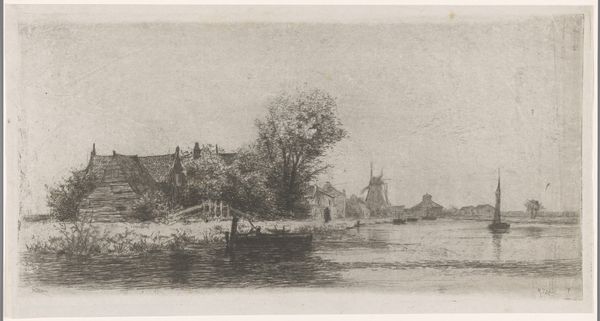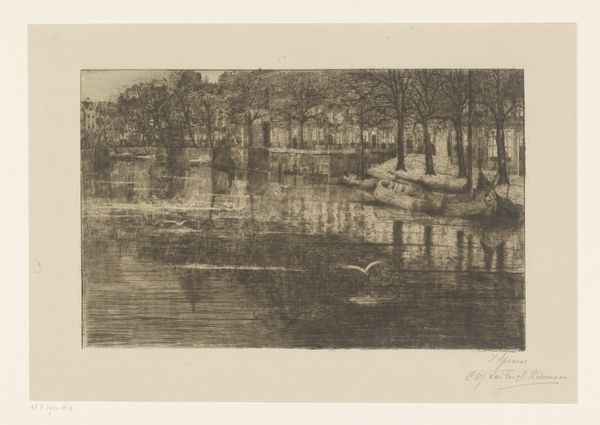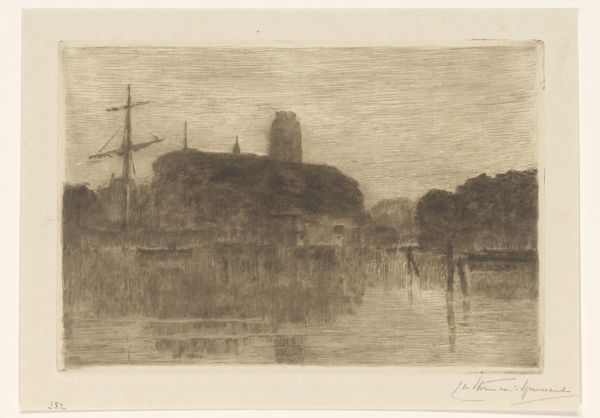
Gezicht op het Spaarne en de Bakenesserkerk in Haarlem 1864 - 1909
0:00
0:00
corneliachristinajohannavantrigthoevenaar
Rijksmuseum
#
light pencil work
#
pale palette
#
natural tone
#
pencil sketch
#
light coloured
#
old engraving style
#
natural light
#
pen-ink sketch
#
natural palette
#
warm natural lighting
Dimensions: height 164 mm, width 208 mm
Copyright: Rijks Museum: Open Domain
Curator: Standing before us is a view captured by Cornelia Christina Johanna van Trigt-Hoevenaar. It's titled "Gezicht op het Spaarne en de Bakenesserkerk in Haarlem," dating sometime between 1864 and 1909, and the image portrays a serene view of the Spaarne river in Haarlem, dominated by the Bakenesserkerk. Editor: It feels muted and peaceful, a sort of gentle dream. The fine strokes create soft, blurred edges that add to that dreamlike state. The composition, while quite simple, effectively leads the eye toward that central church tower. Curator: Exactly. It offers insight into Haarlem’s urban fabric and its intimate relationship with its waterways and religious institutions during that period. Works like this were crucial in shaping local identity. It's currently housed in the collection here at the Rijksmuseum. Editor: Looking closely at the etching technique, you notice how the lines vary in weight and density, which builds depth. The dark, dense areas really bring forward the rippling water, whereas the buildings are rendered with very light marks and minimal tone. It’s quite a stark contrast, right? Curator: Yes, and consider the era it comes from, how this style of landscape art was intertwined with emerging notions of national pride and regional identity, particularly after the industrial revolution started rapidly altering urban landscapes. The availability and cost of prints, which allowed wider distribution, definitely served a social function. Editor: Definitely. Plus, I think there's real beauty in the sparseness. By choosing not to saturate the piece, Van Trigt-Hoevenaar creates a sense of calmness, but also almost longing…like this is a treasured memory faded through time. Curator: An important factor of how art was disseminated and viewed in 19th century Netherlands society... its place in public discourse. Etchings of this nature found their way into homes, shaping perspectives and shared understanding of the environment and cityscape. Editor: I agree that knowing the background informs so much of the emotion you derive from the work, that tension. Looking at it again, I appreciate how it really transcends a simple rendering and manages to evoke an emotional state just through tone, lines and form. Curator: Precisely. By understanding both the historical context and compositional strategies, we get a full glimpse into not only Haarlem during that time period but how notions of identity and locale were portrayed in this visual art format and, in turn, received by the culture consuming this art form.
Comments
No comments
Be the first to comment and join the conversation on the ultimate creative platform.
